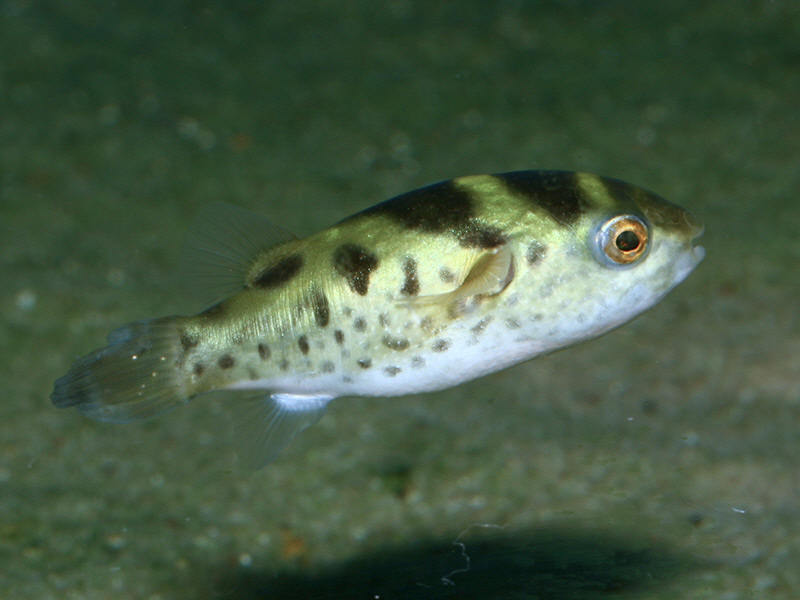Ceylon Puffer
The Ceylon Puffer is a fascinating fish that is native to Sri Lanka and other parts of South Asia. With its unique shape, vibrant colors, and impressive size, it is no surprise that many people are drawn to these fish. However, there is much more to the Ceylon Puffer than just its appearance. In this blog post, we will explore the world of Ceylon Puffers to learn more about these magnificent creatures and what makes them so special.
Pain Points
Although Ceylon Puffers are fascinating creatures, they are not without their challenges. One of the biggest challenges is creating the right environment for them. They require a large tank with plenty of space to swim, as well as a carefully managed diet. They are also quite sensitive to changes in water conditions, so it is important to keep their tank clean and well-maintained. Additionally, while their vibrant colors are eye-catching, they also serve as a warning to other creatures that they are poisonous, which means that they cannot be kept with most other fish.
Target of Ceylon Puffer
Ceylon Puffers are a great choice for experienced fish keepers who are looking for a unique and challenging fish to care for. Their unique appearance and behavior make them a fascinating addition to any tank, and their relative rarity means that they are sure to be a conversation starter. However, due to their size and specific needs, they are not a good choice for beginners or those with smaller tanks.
Summary of Main Points
In summary, Ceylon Puffers are a fascinating and challenging fish that require careful attention and care. While their appearance is undoubtedly eye-catching, it is important to remember that they require a specific environment and diet in order to thrive. They are best suited for experienced fish keepers who are looking for a unique and rewarding challenge.
Personal Experience with Ceylon Puffer
When I first saw a Ceylon Puffer, I was immediately struck by its bold colors and unique shape. I was fascinated to learn that they were poisonous and couldn't be kept with most other fish. I decided to take on the challenge of caring for one, and while it has certainly been a learning experience, I wouldn't trade it for anything. Watching my Ceylon Puffer swim around its tank is truly mesmerizing, and it's been a great conversation starter when I have friends over.

Ceylon Puffer's Habitat
Ceylon Puffers originate from the slow-moving freshwater rivers and ponds of Sri Lanka and other parts of South Asia. As such, they require a tank that replicates these conditions as closely as possible. This means a large tank with plenty of plants, rocks, and hiding places, as well as a powerful filtration system to keep the water clean and well-oxygenated. It is also important to keep the water temperature consistent, as Ceylon Puffers are sensitive to changes in temperature.

Diet of Ceylon Puffer
Ceylon Puffers are carnivorous and should be fed a diet that is high in protein. They will typically eat a mix of live and frozen foods, including shrimp, krill, and worms. It is important to be careful not to overfeed your Ceylon Puffer, as they are prone to obesity and other health problems if they are fed too much. As a general rule, they should be fed small amounts twice a day.

Behavior of Ceylon Puffer
Ceylon Puffers are known for their unique behaviors, which include puffing themselves up and swimming upside down. They are also quite territorial and can become aggressive if they feel threatened or if their territory is invaded. It is important to provide plenty of hiding places and ample space to swim in order to prevent territorial disputes.
Questions and Answers
Q: Can Ceylon Puffers be kept with other fish?
A: No, Ceylon Puffers are highly territorial and will attack most other fish. They are best kept alone or with other Ceylon Puffers.
Q: How big do Ceylon Puffers get?
A: Ceylon Puffers can grow up to 17 inches in length, although this is quite rare in captivity.
Q: Are Ceylon Puffers difficult to care for?
A: Yes, Ceylon Puffers require a specific environment and diet in order to thrive, which can be challenging for beginners.
Q: Are Ceylon Puffers poisonous to humans?
A: Yes, Ceylon Puffers contain a toxin known as tetrodotoxin, which can be fatal to humans if ingested. It is important to handle them carefully and avoid ingesting any part of the fish.
Conclusion
In conclusion, the Ceylon Puffer is a fascinating and challenging fish that requires careful attention and care. While they are not suitable for beginners, they are a great choice for experienced fish keepers who are looking for a unique and rewarding challenge. With the right environment and diet, Ceylon Puffers can thrive and provide their owners with years of enjoyment.
Gallery
Ceylon Puffer, Tetraodon Fluviatilis - Care & Stats

Photo Credit by: bing.com / puffer ceylon tetraodon fluviatilis
Ceylon Puffer Fish | Arizona Aquatic Gardens

Photo Credit by: bing.com / puffer fish ceylon azgardens fluviatilis tetraodon arizona aquarium gardens freshwater brackish animals
Pin On Paddicted

Photo Credit by: bing.com / tetraodon kogelvis fluviatilis ceylon puffer
Sharz Ceylon Puffer - YouTube

Photo Credit by: bing.com / puffer ceylon
The Brackish Tank • Ceylon Puffer/Green Puffer Genus: Tetraodon

Photo Credit by: bing.com / puffer ceylon brackish tetraodon genus

0 Response to "Ceylon Puffer"
Post a Comment